Emmanuel Breguet Talks Fakes In The Time Of Abraham-Louis Breguet And Much More
Our pal Jan Lidmaňský interviewed Emmanuel Breguet, vice president and head of patrimony at Breguet. He chatted with this direct descendant of Abraham-Louis Breguet about fakes in the time of Breguet, which watch is still missing from the Breguet Museum’s collection, and how many pieces the company has acquired at auction over the last 20 years, among other things.
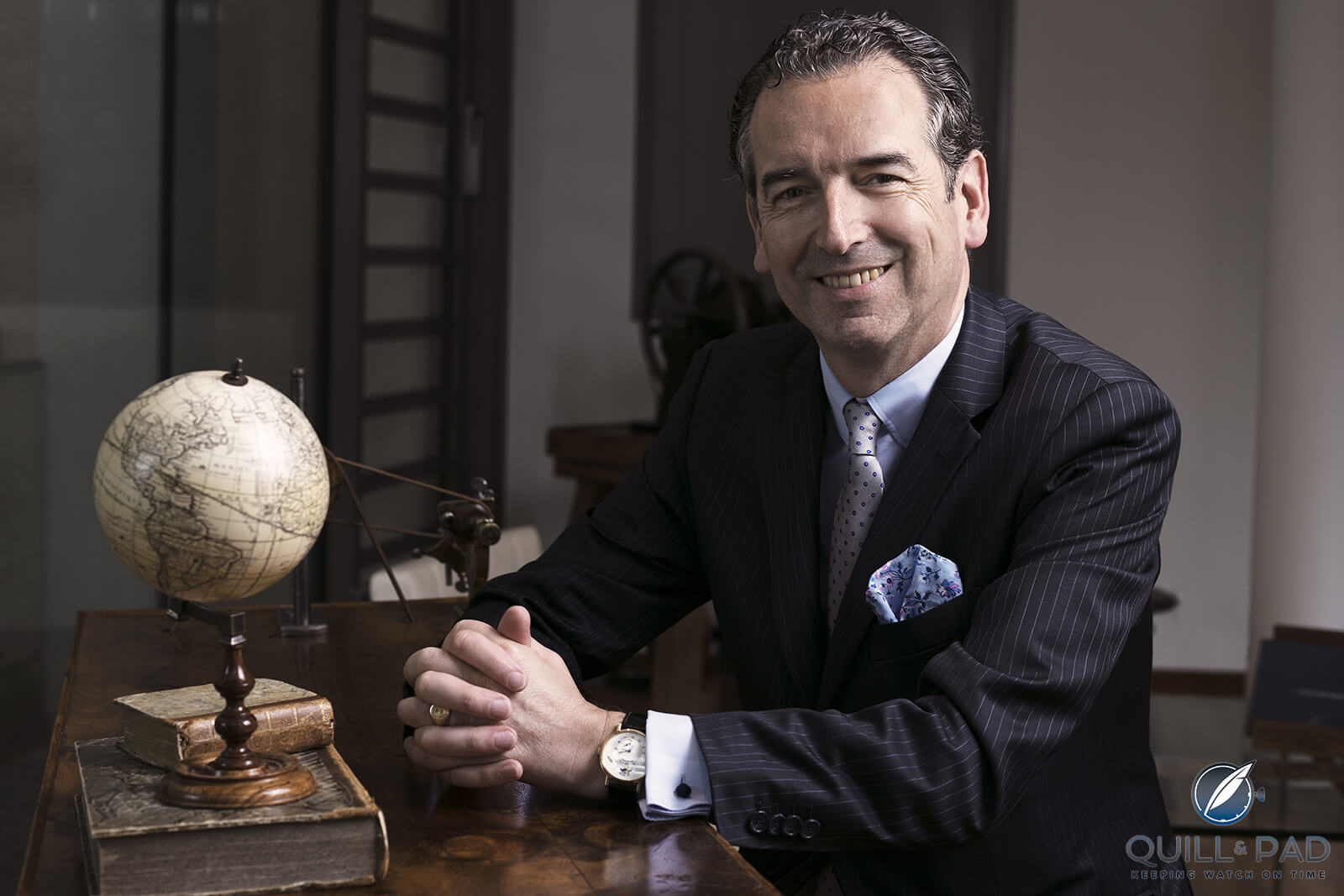
Emmanuel Breguet, vice president and head of patrimony at Breguet
Quill & Pad: You have written books about Breguet. Do you have secret archives in the manufacture? And where do you keep all the historical documents?
Emmanuel Breguet: I indeed am fortunate to be in charge of heritage at Montres Breguet and to have had this fabulous opportunity to write the history of the house. There had been other books about Breguet, mostly catalogues and descriptions of collections, timepieces, or inventions, but the life of Breguet and the sum of its different aspects such as him being the head of a company, for example, had not been studied before. I feel immensely fortunate to have been able to do it. As you mention it very correctly, a historian needs his sources.
My research included the study of archives belonging to the house of Breguet as the company has always continued to record its production on paper. Today, within these archives we have records of all the timepieces that were made from the end of the eighteenth century. It means we can find a description of the object, but also the date when it was manufactured, the start and end date of assembly, we can read about the difficulties involved in making it, and the time it took to deliver the piece. We have the dates, but we also know to whom the watch was sold. So today we use this data to write the history of the house and we also use it in our communication as we can claim facts and prove that they are true.
Aside from the Montres Breguet archives, in the research for the book I studied some archives and documents that remained with the Breguet family, which testify to the life of the family and tell about the relationship with some clients who had correspondence with Breguet.
In addition to private archives, I also accessed public archives like the national French archives and those of the French Academy of Sciences, for example.
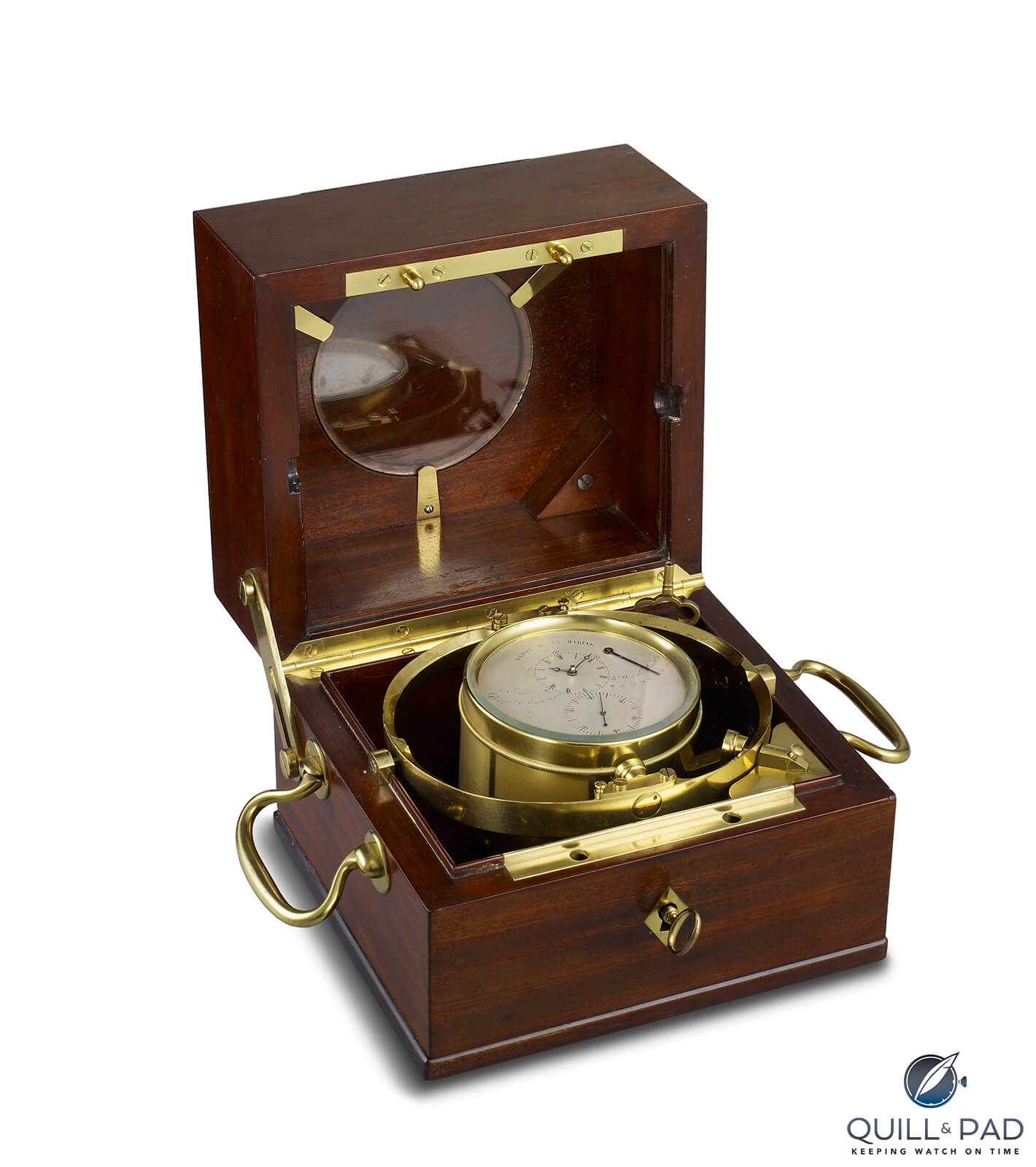
Breguet No. 5107 marine chronometer
Q&P: What was the most interesting piece of information you found in your investigation of the family’s past?
EB: There were a lot of documents to read and study, not only to research the technical legacy of Breguet but also his activities as the head of a company. Breguet was not only a technician; he was also an artist and someone who could organize a workshop around himself. He knew how to recruit the best employees and also how to build his distribution network from very early on. We see that starting from 1800 Breguet had representatives in different countries, and some of them were located quite far for that time. He was represented in England, Spain, Germany – the countries around France – and Italy, but also in Russia with a very strong presence there, and in Turkey.
His technical work had already been studied, and I was particularly interested in the artistic aspect of it. He never made the same timepiece twice. It is exciting and interesting to see that he never specialized in any single watchmaking domain but made a significant contribution to all of them. He could for example have focused only on repeater watches, or on automatic winding watches, or only on travel clocks, but he produced a very large range of objects in all different spheres. It is very important to see how much technical but also artistic innovation he brought into watchmaking. After Breguet, and thanks to his influence, watches in general became different from the technical point of view but also from an artistic point of view, in terms of their style.
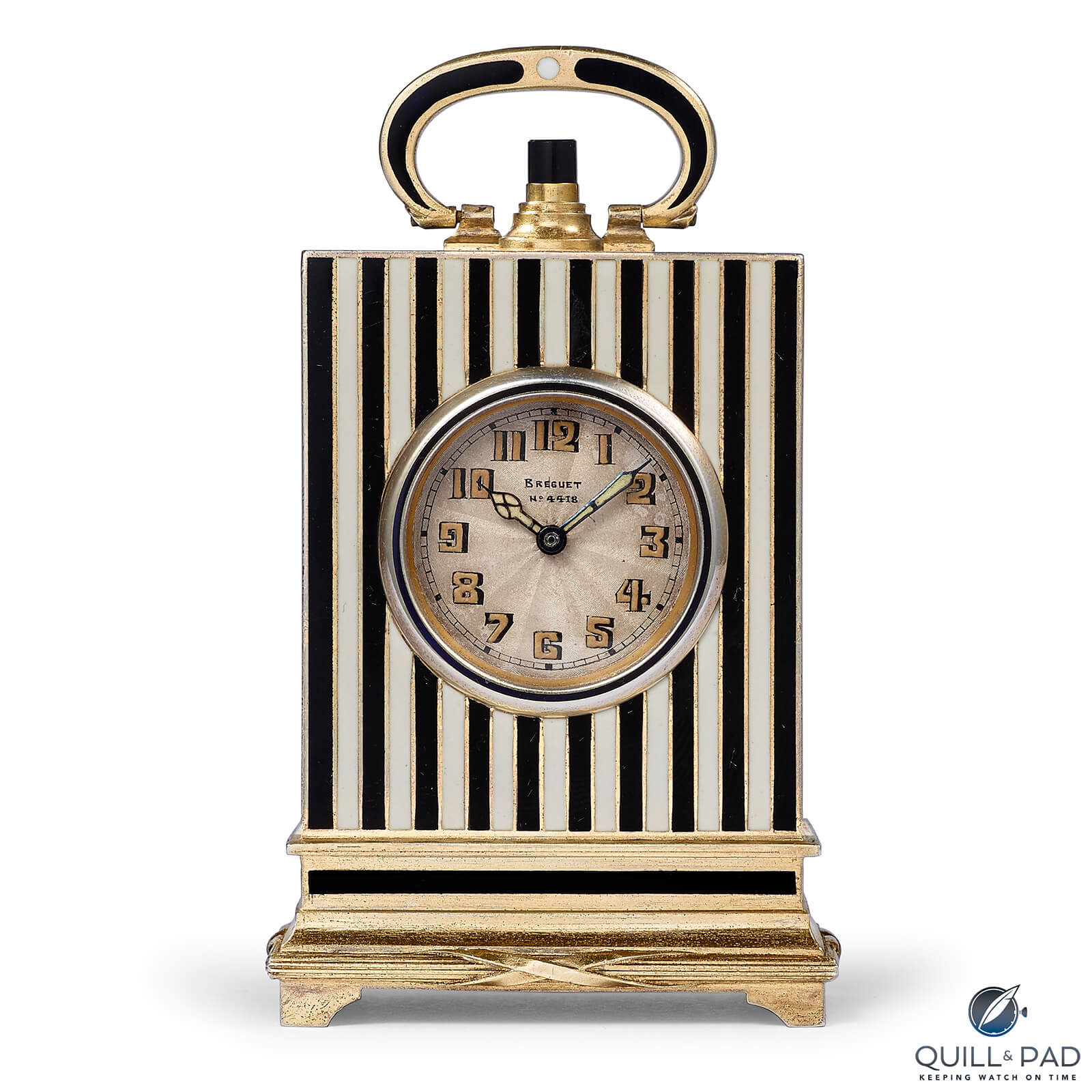
Breguet No. 4418 art deco clock
Q&P: There are a lot of museums around the world where you can find Breguet watches from the past. Some are signed “Breguet,” some “Breguet à Paris,” and some “Breguet & Fils.” What are the differences?
EB: During his lifetime, Breguet used various signatures. At the beginning it was just “Breguet,” and then from 1800 or 1801-1802 or so when his closest employee was his son, everything was signed “Breguet et Fils” ( “Breguet and son”) until 1823 when Breguet the father died. Then starting from 1823 the signature again became “Breguet” with no additions.
But starting from around 1815, some watches were signed “Breguet et Fils, Horloger de la Marine Royale” because Breguet received the highly prestigious title of chronometer maker to the French Royal Navy.
In relation to the signature “Breguet à Paris,” generally speaking all the watches signed in this way are fake, including those signed “Breguet et Fils à Paris”: these are watches that were not made by Breguet but rather by other not very honest watchmakers who aimed to deceive their clients by adopting this signature.
Also, all the watches signed “Spiral Breguet” were not manufactured by the house of Breguet. These watches were made by many other manufacturers who mentioned this just to indicate that they used the Breguet overcoil spring.
So one has to pay attention to the signature, and it helps to identify the watch alongside other aspects such as the numbering. We have all the archives listing the serial numbers of the pieces. There are also stamps on the cases and hallmarks for the precious metals. There are many aspects that help authenticate the object.
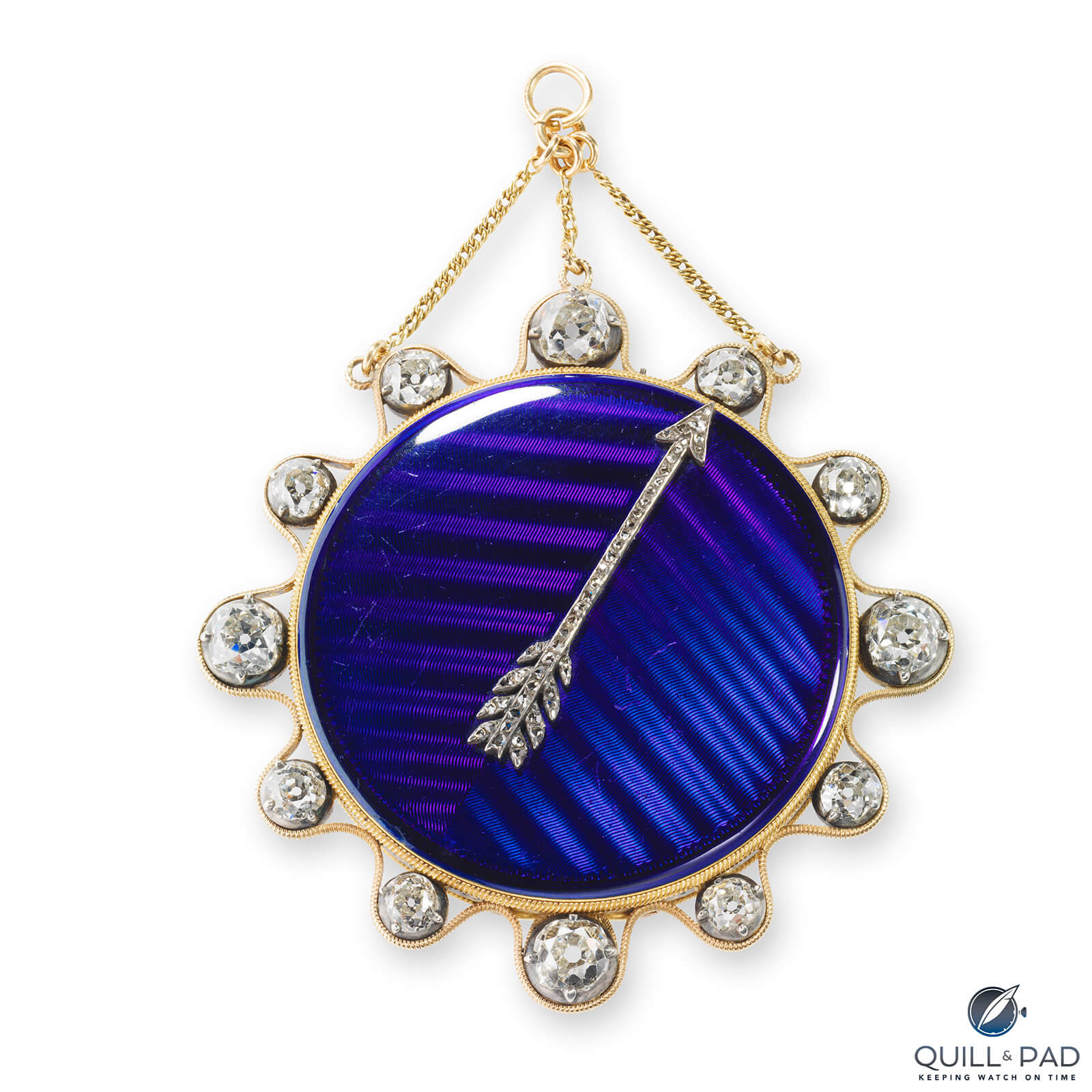
Breguet No. 611 montre à tact
Q&P: How often do you find a fake from the past?
EB: There are a lot of fake watches out there as Breguet was copied and imitated a lot, and there were dishonest people who signed the watches that were not made by him with his name. Therefore, there were more fake Breguet watches in the nineteenth century than authentic ones. So today when we receive requests for authentication, we often, unfortunately, have to reply that the piece is fake.
Q&P: Can you help people and institutions with the restoration of antique pieces?
EB: Of course we offer the service of antique watch restoration and we start with the principle that any antique Breguet watch, no matter from which period, should be able to be restored by our watchmakers. Our restoration watchmakers have been fortunate enough to work on some rare watches that can be very complex or on the contrary very simple in their construction and they feel very passionate about their work.
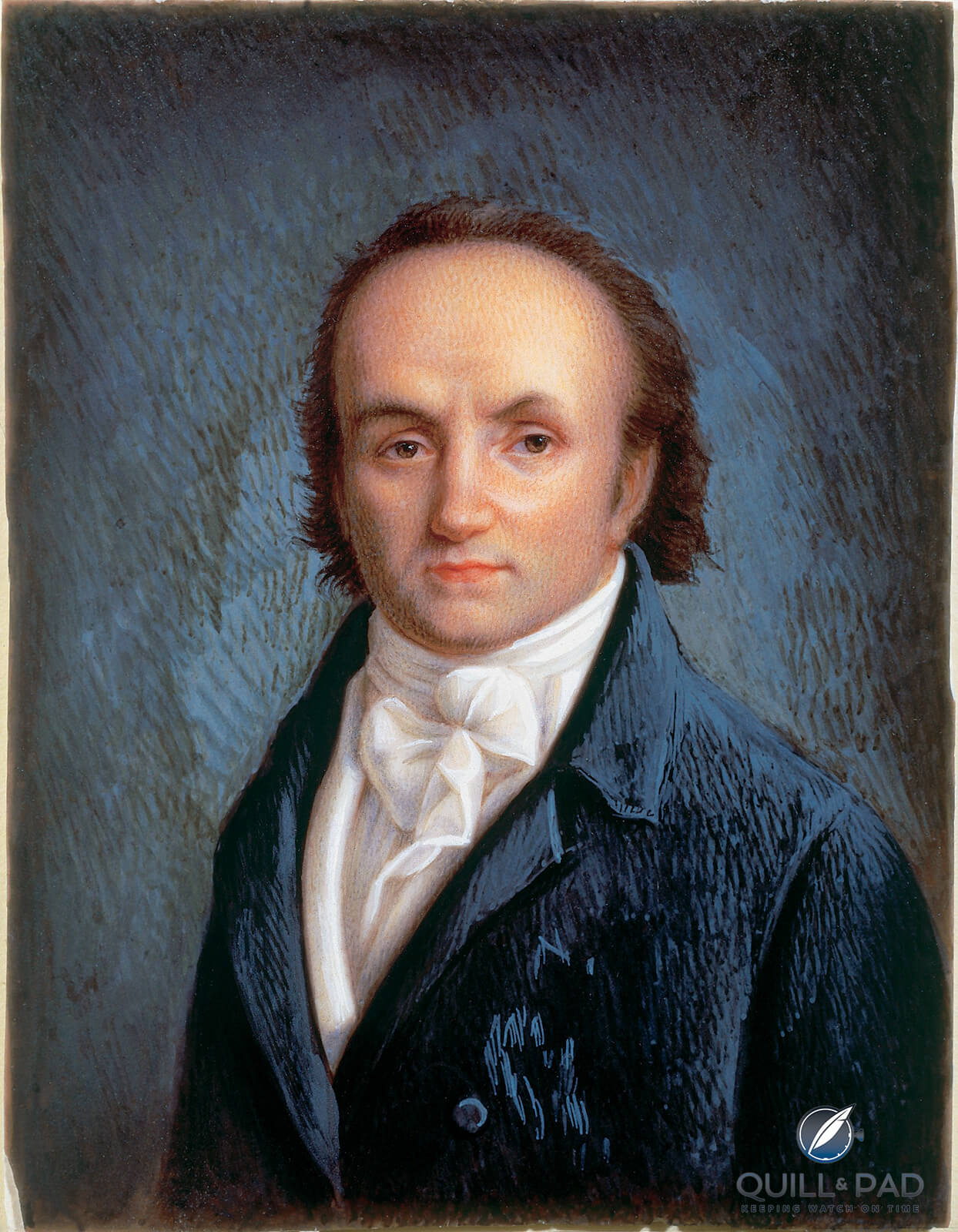
Abraham-Louis Breguet portrait
Q&P: How often do you participate in auctions to buy important pieces?
EB: I was also very fortunate to have been able, under the direction of Mr. Nicolas Hayek at the time, and now with Mr. Marc Hayek, the president of Montres Breguet, to constitute our own collection of heritage Breguet timepieces. Starting from 2000, we have acquired about 250 antique Breguet pieces. It is amazing to discover the watches that interest us in the sales catalogues and, on the day of the sale, to be able to participate in the auction to buy them. We have been lucky and we found some exceptional objects.
The Montres Breguet collection is exhibited in part in the Breguet Museum in Paris, Place Vendôme, located on the upper floor of our flagship boutique. Another part of our collection will soon be exhibited in the Maison du Patrimoine that will be like a second museum located in the Vallée de Joux close to the Breguet Manufacture and our offices.
We have acquired some true treasures, watches of high value such as the antique tourbillon, the complication watches, an extraordinary clock, and other objects such as marine chronometers and some of the first automatic winding watches made by Breguet. We have a selection of “the best of” Breguet creations, and this collection does not end with the founder, Abraham-Louis Breguet, or his son, but traces various periods of the uninterrupted history of the house.
As you know, the house of Breguet has continued its activities without interruption since the end of the eighteenth century – it lived through a quarter of the eighteenth century, all of the nineteenth century, all of the twentieth century, and soon will have covered a significant part of the twenty-first century. It means that the history of the maison spans four centuries. The Museum collection has to reflect the creations of the house from the end of the nineteenth century, beginning of the twentieth century, and the second part of the twentieth century, etc. So we have acquired other objects than those of the founder.
Q&P: What is the most important artifact from the past in the possession of maison Breguet? And the most valuable?
EB: In our Breguet Museum today we have extremely rare pieces and also the pieces that have a double value: a technical value because these are extremely fine Breguet masterpieces and also a historical value as they belonged to important figures in history.
For example, in relation to Napoleon we have an extraordinary piece that belonged to Empress Joséphine, his first wife, and also a very beautiful piece that belonged to his second wife, Marie-Louise of Austria. We have antique tourbillons, extraordinary clocks, a watch with a double movement, grand complications, a ring watch equipped with an alarm function with a little needle that pricks the finger, marine chronometers, and many other exceptional objects. I invite you to come and visit the Breguet Museum and this collection that shows the broad range of the work of Breguet.
Having contributed to building this museum collection, bidding in the auctions, on the phone together with Mr. Nicolas G. Hayek or Mr. Marc Hayek, having been able to participate in the auctions in a very dynamic way, I can confirm that it is obvious that the Breguet legacy is very important for the house of Breguet today and it constitutes a great value. There is no need to say it, however there are many watches in our museum that have a value of over a million, some over two million, and some rare ones over three million euros. But it is not a question of money that is important; it is the homage to the work of Breguet that is very emblematic.
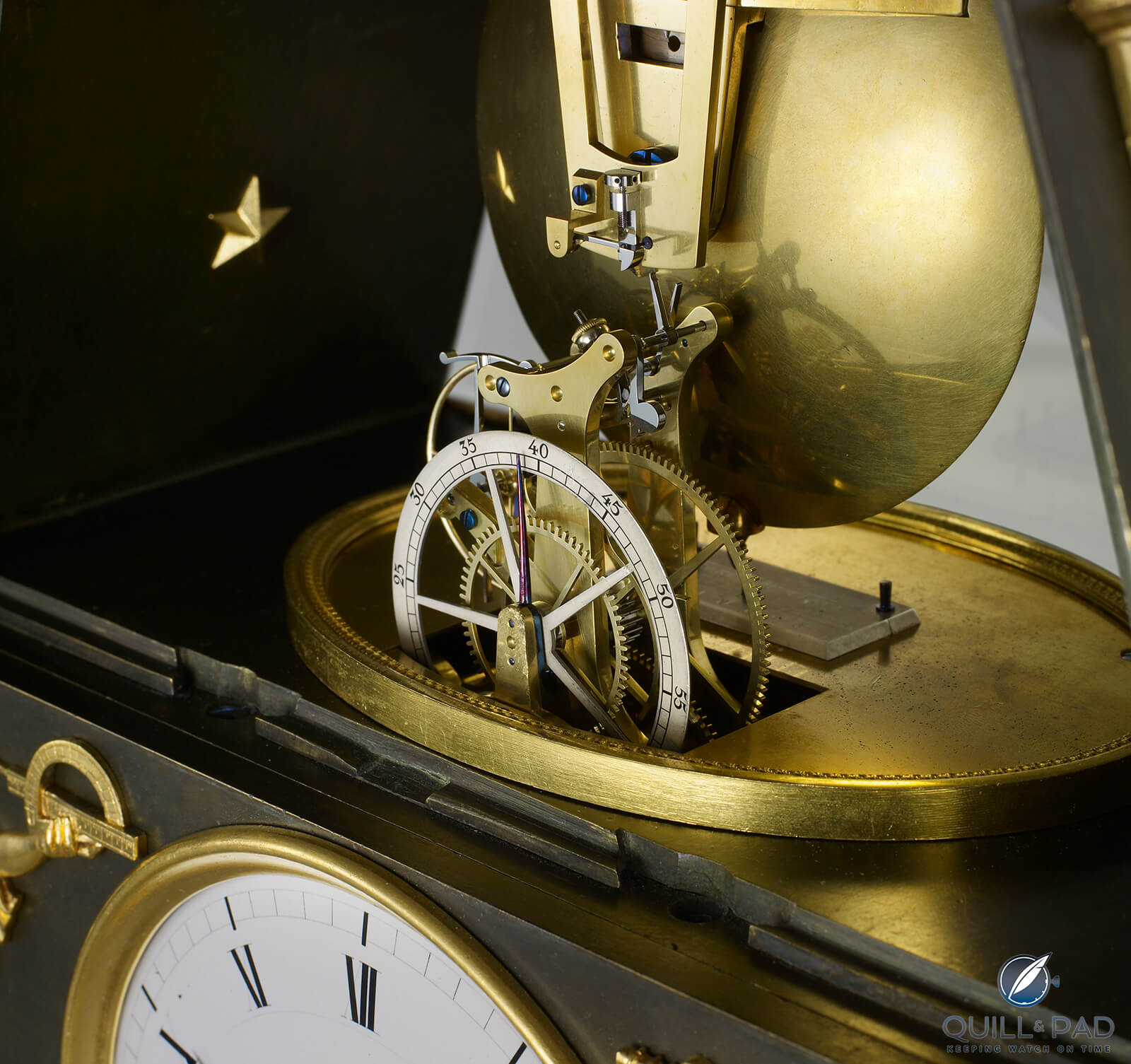
Breguet No. 449 exceptional clock
Q&P: Not only clocks and watches are part of Breguet’s history, but also innovation in the aviation industry. The family had incredible creativity. What’s your perception of today’s watchmaking under the Breguet name?
EB: As you point out correctly, the long history of Breguet also includes aviation. It is noteworthy that after the three generations the Breguet family has stopped activities in watchmaking to explore other spheres like electricity and telecommunications, the first telegraphs, telephones, and aviation. And during this period the house of Breguet was managed by another family and after that by other successive owners until 1999, when Swatch Group acquired Breguet. Therefore, the name Breguet stands for a long tradition of creativity in different areas.
The object missing from the Breguet collection that we would very much like to have is a Sympathique clock. We have a clock that used to be part of a Sympathique clock capable of resetting a pocket watch placed on it that used to belong to the Russian Tsar Alexander the first, but the watch that was part of it did not survive. Therefore, our aim for the collection would be to acquire a complete Sympathique clock with its original watch whenever it will be possible. There were very few at the time and all of them are currently in private collections or museums, so it is a difficult task.
Q&P: I have always seen Breguet as a revolutionary inventor. He has created many systems, complications, ideas, some of which haven’t changed until today. If he were still alive, what do you think would be his new big complication?
EB: We continue to innovate, and as the person in charge of heritage my role is to transfer the message that Breguet was an innovator and a revolutionary, as you mention correctly. The watchmaking before his time was not the same as after him, and we can see how much he changed watchmaking in all its visible and invisible aspects. We can consider him a true father of modern watchmaking and many of his inventions continue to live today, inspiring our watchmakers but also other watchmakers and everyone else who loves watchmaking today.
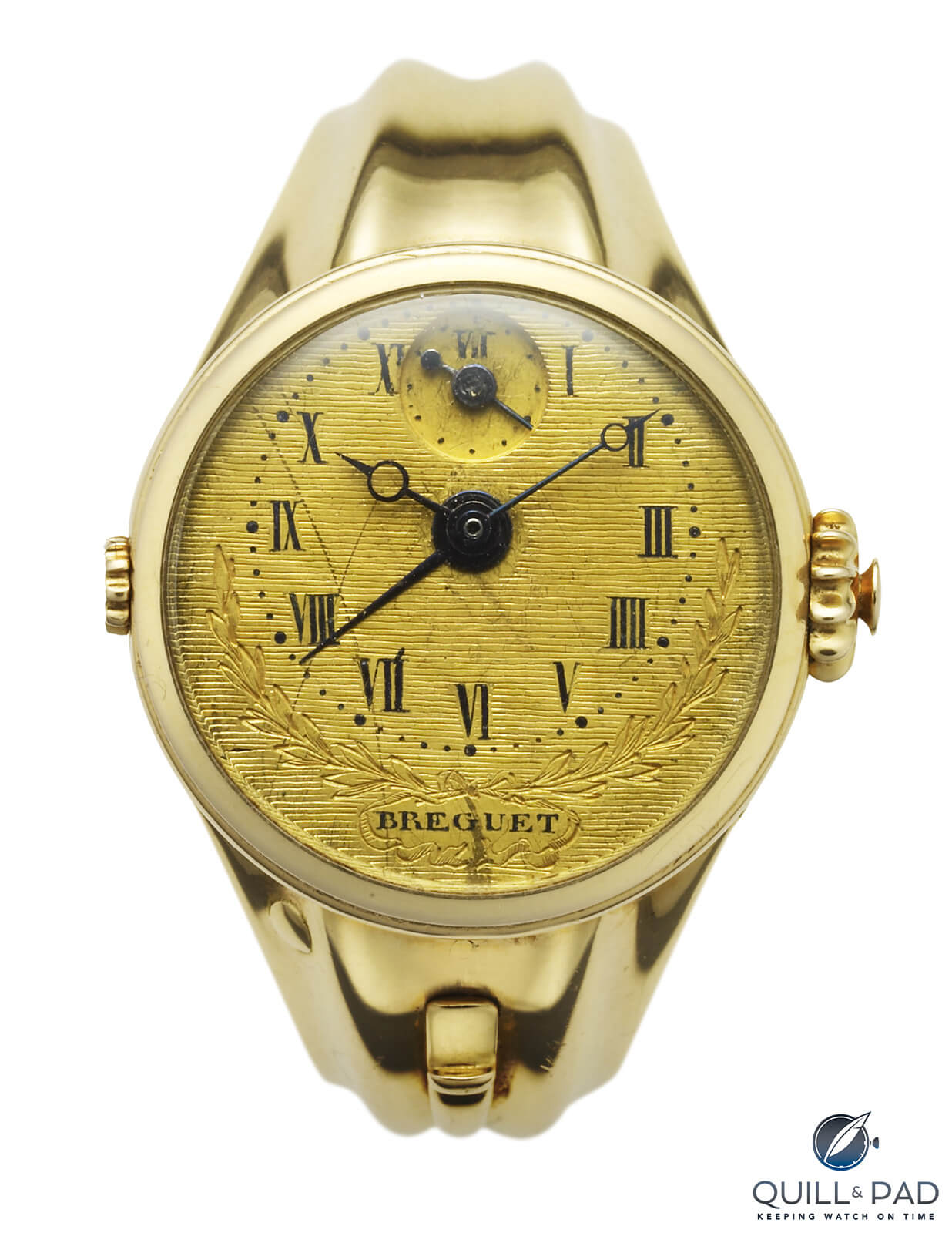
Breguet No. 180 ring watch with winding crown
Q&P: Breguet watches are today equipped with silicon components. In the inventing spirit of Breguet, wouldn’t he experiment with more materials? The same thing with design – it’s still really classic, but is largely influenced by the past. Where is the border for you that the brand cannot cross today?
EB: We continue to innovate and use different materials like Breguet did at the time. He experimented a lot with materials, with the dilatation of metals. It is obvious that today he would have explored the same paths that we explore. But it is difficult to say what he would have done, and I have a lot of respect for him so I would not express myself on his behalf saying that he would do this or that.
Anyway, he was an innovator and he did not hesitate to change everything, and he did change everything in watchmaking. So the message here is that we should not stop ourselves from innovating and we are right in looking for new solutions and changing things to make ever more reliable and efficient movements.
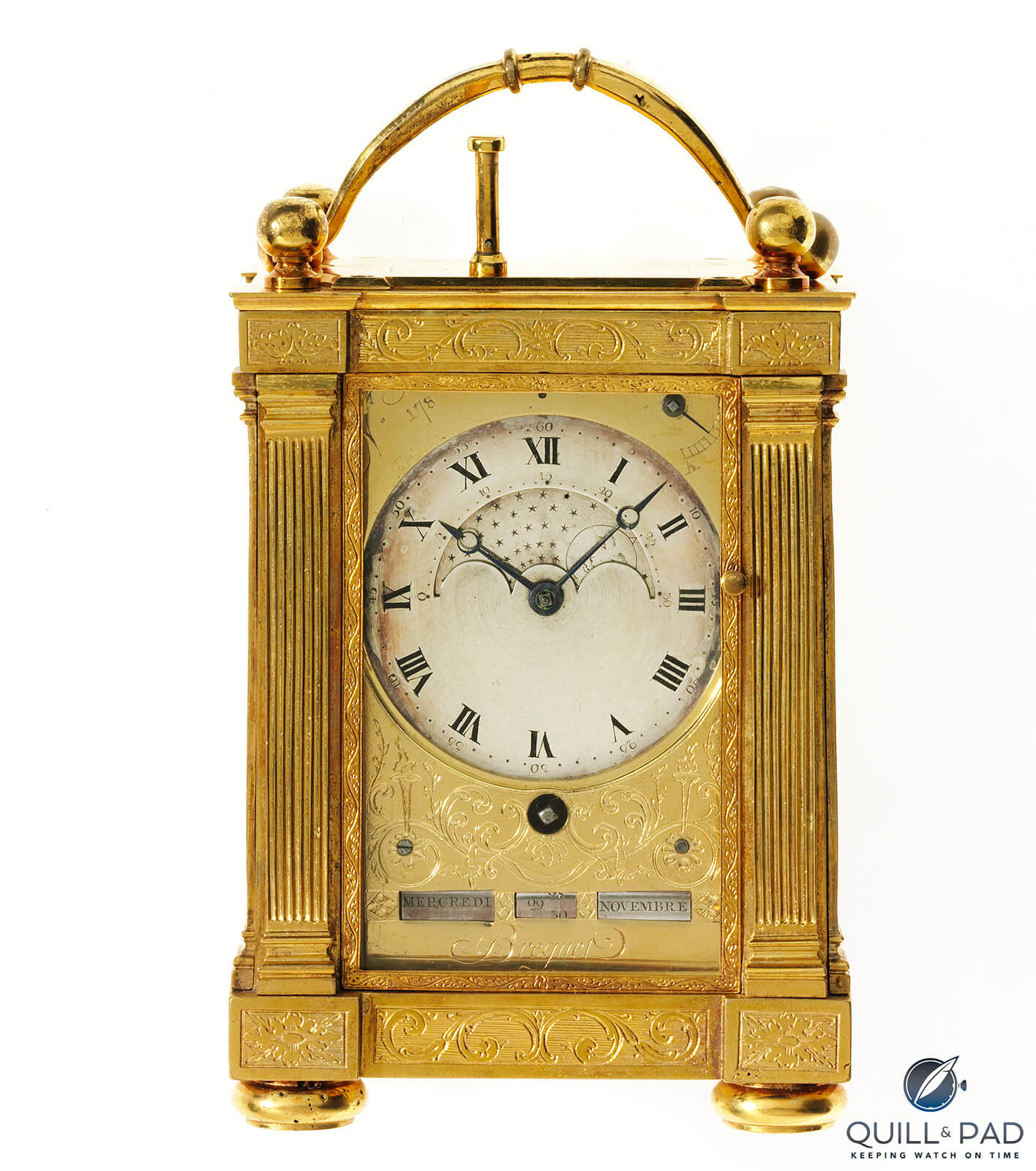
Breguet No. 178 travel clock (photo courtesy Swiss National Museum)
Q&P: What is your favorite masterpiece from history and why? And which one in the current collection?
EB: There are a lot of antique pieces that I love in their technical and artistic aspects. We have extraordinary pieces in the museum. There are also amazing pieces in other museums. But we own excellent watches, and it is difficult for me to choose one over another.
In the modern collections, I would highlight some Classique collection watches that are reminiscent of the Breguet design with off-centered dials. I also like the Tradition line a lot as it recalls the movement architecture making the inside of the watch visible without having to turn the watch over. Everything is on the dial side and we can see how the watch works. I think Breguet himself would have loved that as he always wanted to express watchmaking in a simple way and wanted his clients to understand how the mechanics work.
For more, please visit www.breguet.com.
Jan Lidmaňský is a watch collector and journalist from the Czech Republic; follow him on Instagram at @watch_the_food.
You may also enjoy:
You Are There: Breguet’s Art And Innovation In Watchmaking Exhibition
The First Wristwatches From Breguet, Hermès And Patek Philippe Were Made . . . For Women
Leave a Reply
Want to join the discussion?Feel free to contribute!



“The noblest art is to make others happy”.
Allow me to quote from P. T. Barnum to thank the kind of article I prefer to find on sites like Q&P.